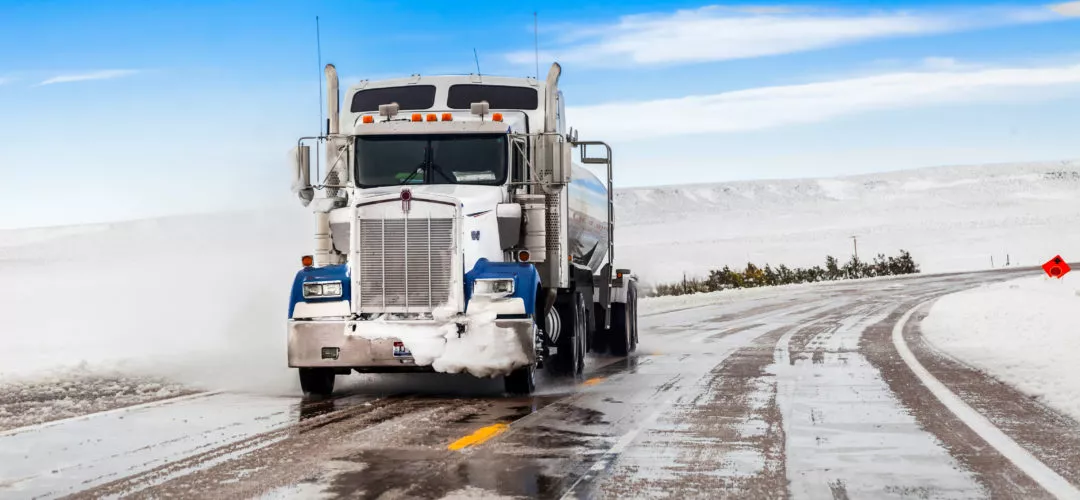No one could have anticipated the winter emergency that Texas recently experienced. From power outages to food shortages, the unseasonably cold and wet weather crippled communities in the south. Unfortunately, these devastating events shed light on how unprepared some businesses are when winter weather hits. Is your supply chain ready for winter?
Though not all supply chains are housed in cold weather, we have all felt the effects of Mother Nature during the winter months. From transportation issues to a surge in COVID-19 rates, winter has the potential for supply chain shortages and massive delivery delays like we saw in the south.
Forbes recently published an article highlighting the effects of winter on the supply chain. From antiquated forecasting models to outdated technologies, 3PLs are needed more than ever to bridge the gap between carriers and shippers. Here are the article highlights to ensure your supply chain will be ready for next year’s big storms.
TOP TIPS FROM FORBES TO FIGHT WINTER
1. MORE ACCURATE DEMAND FORECASTING
The shift from brick and mortar stores to online shopping has overhauled how the supply chain operates. One-day shipping, easy returns, and constant updates to consumers have forced the supply chain to update systems, cut delivery times and increase customer satisfaction. Businesses have introduced technologies, like Radio Frequency Identification (RFID) and cloud-based analytics tools, to monitor consumer trends and more accurately plan for demand. How technology improved inventory management
In the article, Forbes discusses how Walmart launched Walmart+ to accommodate the growing needs of consumers. In direct competition with Amazon Prime, the membership service offers free shipping, no minimum orders and one and two-day delivery. How is this possible? Through the advancements in demand forecasting. E-commerce giants like Amazon and Walmart use data to facilitate and prioritize business activity, including production planning, risk assessments and shipping needs.
2. REAL-TIME VISIBILITY IS KEY
Technology hasn’t just aided in more accurate demand forecasting; AI and robotics advancements have led to transparency the supply chain has never seen before (no pun intended). “Armed with real-time data about the location of freight in transit, an increasing number of supply chain companies and their partners are using that information to improve travel lanes, get trucks in and out of loading docks faster, optimize work crews and streamline communication between trading partners up and down the supply chain.”
Supply chain visibility is crucial to the success of any business. Aside from internal collaboration, transparency increases efficiencies and processes, helping to drive growth and reduce costs. The process of obtaining visibility from order to delivery drives business decisions and helps manage risk. Without these critical insights, supply chains are forced to remain operating as they always have. With greater visibility comes the ability to adapt and pivot where needed.
Gartner Vice President of Research Bart De Muynck said that visibility technology has “become a necessity” amid pandemic-driven lockdowns, demand spikes and supply disruptions like we’ll experience throughout the winter months.
3. MORE FOCUS ON WORKER SAFETY
Just like so many health care professionals, supply chain workers have put themselves in harm’s way to make sure supply chain disruptions are minimal throughout this on-going pandemic. With increased cases throughout the winter months, workers from dock loaders to truck drivers have endured potential exposure to keep organizations running.
In response to workers’ dedication, supply chains have introduced new protocols and safety measures to keep their staff safe. Contactless loading, mobile tracking apps, and electronic documentation are just a few of the new initiatives warehouses are implementing to focus on worker safety. As winter months bring unexpected delays and harsh travel conditions, it’s imperative supply chains look after their front-line workers and even more so now with the threat of COVID-19. Safety & Sustainability: Responsible Care Certification
WAS YOUR SUPPLY CHAIN READY FOR WINTER?
As with most changes, preparation is crucial. Next winter, supply chains will need to adapt to the climate, both weather and market trends. Forbes’ article highlights the importance of shifting with the times and the seasons. How will your business prepare for next winter? Let our experts help. At WSI, we have over 50 years of experience in supply chain and logistics integrated solutions to take on even mother nature’s harshest conditions.

